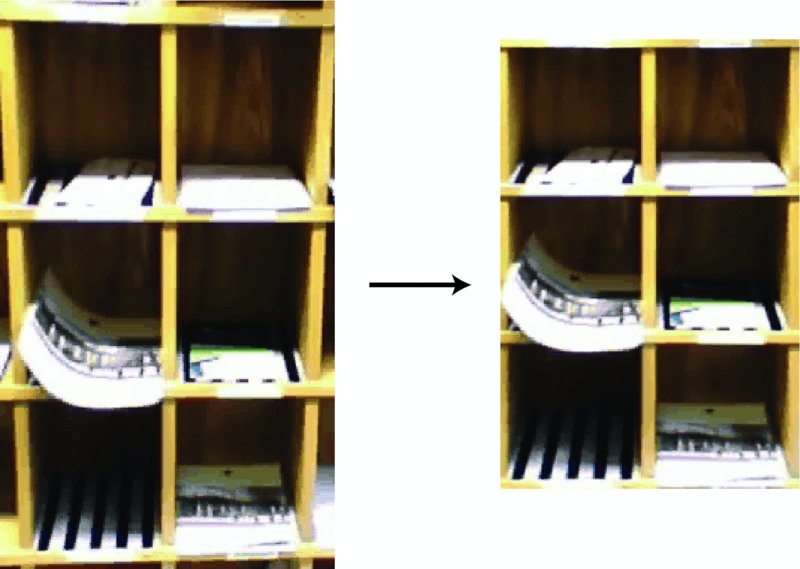5 Geometric Transformations
Geometric transformations (or operations) are used in image processing for a variety of reasons (Mundy and Zisserman, 1992). They allow us to bring multiple images into the same frame of reference so that they can be combined (e.g. when forming a mosaic of two or more images) or compared (e.g. when comparing images taken at different times to see what changes have occurred). They can be used to eliminate distortion (e.g. barrel distortion from a wide angle lenses) in order to create images with evenly spaced pixels. Geometric transformations can also simplify further processing (e.g. by bringing the image of a planar object into alignment with the image axes; see Figure 5.1).

Figure 5.1 Example of a geometric transformation which corrects the perspective distortion introduced when viewing a planar object (e.g. the front of the postboxes above)
An overview of the problem and how it is addressed is given in Section 5.1, followed by details of the most common linear transformations (affine transformations in Section 5.2 and perspective transformation in Section 5.3) and how more complex transformations are modelled (in Section 5.4). When applying any geometric transformation we must interpolate values for the output image from the pixels in the input image (see Section 5.5). The chapter finishes with details of how distortion in camera systems are ...
Get A Practical Introduction to Computer Vision with OpenCV now with the O’Reilly learning platform.
O’Reilly members experience books, live events, courses curated by job role, and more from O’Reilly and nearly 200 top publishers.

